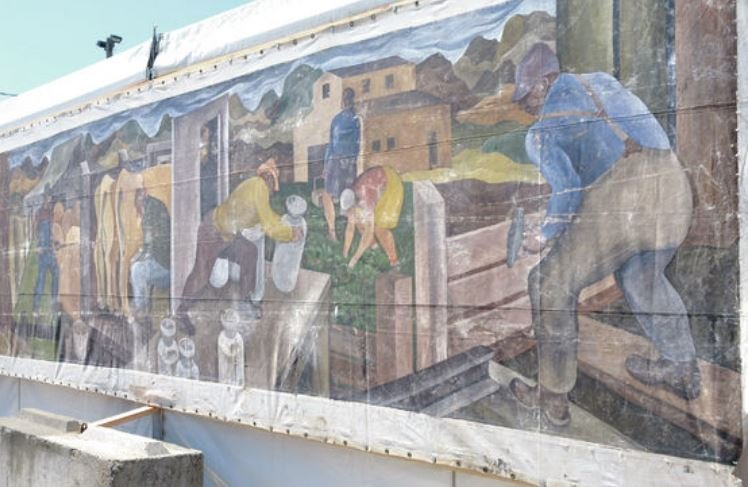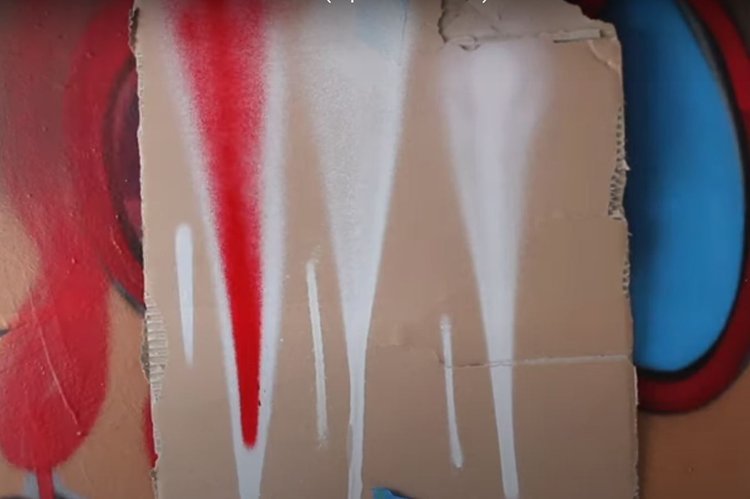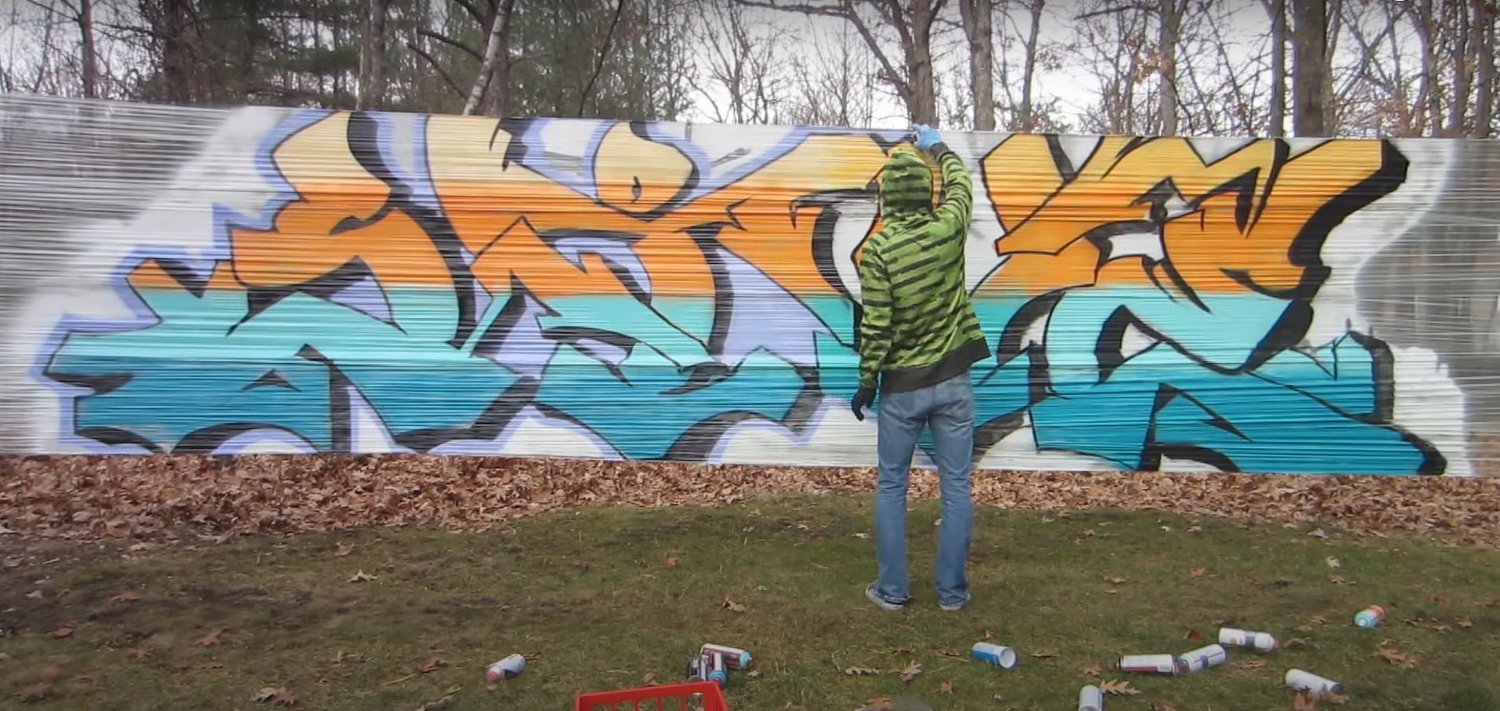How to do graffiti with spray paint? How can I practice graffiti legally?
Those who are new to spray paint often feel overwhelmed with where to begin practicing. In a recent post we talked all about supplies and tools, and today we’re going to suggest a few legal ways to practice with spray paint. We’ll even cover misconceptions about certain areas to paint, such as abandoned factories.
With all of these examples, be sure to protect the wall behind the painting surface to avoid overspray. I recommend doing each of these on your own property to avoid any issues. In many cases, graffiti artists have taken some of these into public spaces, and they’ve gathered crowds of excited onlookers who watched them paint. In most of these cases, the artist doesn’t run into any issues, and sometimes cops will even come to enjoy the show. However, this isn’t necessarily legal depending on your area, and you leave yourself open to complaints. One complaint and you might have authorities coming your way to have you close up shop. If you’re kind and cooperative, they likely won’t arrest you or give you a hard time for something like this since you’re not painting someone else’s property but you’re leaving the ball in their court to decide how to react. For that reason, it’s best to be safe than sorry and keep it at home.
Tarp Wall
May not be graffiti, but it’s a great example of how well this works.
The first suggestion we have is to buy some tarp from your local hardware store and practice on that. This is not only an affordable way to practice, it’s easy enough to store at home. Simply hang this up in the yard, or where ever you can manage and get to spraying. If you’re a bit on the younger side and don’t own the place you live, then be sure to protect the edges of the tarp so overspray doesn’t get on the walls or fence. However, this is still a tarp after all so don’t expect the quality to be perfect. Depending on how, or where you hang this up, the tarp might move around in the wind. Not only that, the paint on the tarp will eventually crack and the tarp will become more and more stiff as time goes on.
Cardboard Wall
Sometimes we don’t have any options, we’re desperate for a solution, and if you find yourself in this boat, then cardboard is surprisingly great. While this might seem ridiculous, it’s much better than it seems, in fact, it might be one of the better options. Not only is this method the cheapest, but with some tape, or some pig boxes, you can make a pretty decent temporary painting surface. When I had no walls, this was especially useful, and the paint works with the surface well, that is to say, the paint doesn’t soak right in and get that dull look. The downsides are, if you don’t have a way to stick the cardboard to the wall then you’ll have to stack boxes and this isn’t practical at all. At that point, you’re better off with one of the other options. The example shown on the right comes from a video where I share tips answering the question of how to do graffiti with spray paint. Check it out here.
Plastic Wrap Wall
Plastic wrap is an awesome solution to this problem. My good friend Sive used this method in a video if you want to see this in action. I don’t know what it is, but there seems to be a wide appeal for painting on plastic wrap that draws a crowd. I’ve seen video after video of people painting on this, and passer byers gathering to watch. Either way, grab your plastic wrap and find two vertical posts. Wrap the plastic around both to create your wall. I found it worked best to make sure you cover the same spot multiple times to give that area more stability. If you only do one layer then the wall will be weak, and it will blow easily in the wind. Keep in mind, your hand, can, or finger might skim the wall as you paint, and if you only have one layer of wrap, then you might tear or pull the plastic. This is the one downside to this method.
Once you’ve got the wall set up, you’re free to paint. The quality is surprisingly good on the plastic, better than I would have expected it to be. Depending on if you wanted to preserve the art or not, this next bit could be a positive or a negative, but you’ll likely have to take the wrap down. Dismantling this is easy enough since you can just pull, rip, and cut it down, bunch it all up, and toss it in the bin. The plastic wrap might take a bit of setup, but man it cleans up easily, and let’s be honest, the cleanup is always the worst.
Ply Wood / Particle Board Wall
100K Subscriber special I painted for YouTube.
Now for the most expensive, but highest quality method, plywood or particle board. Be sure to plan where you want to put these and measure your space. Buy the material that will fit the location and at this point you have a few options. If you’re handy, you can build a whole wall out of this, but I assume, if you have that ability then you likely would have done that. If you’re like me, and struggle to build, you can simply lean these against a wall for a painting surface. No building is needed but it certainly isn’t the best-case scenario. If you’ve bought some smaller-sized boards, then you can mount them onto something pretty easily. Be careful particle board is heavy, especially those larger pieces, so carrying this, or mounting it can be hard. If you’re able to do all of that then you’ll have yourself a high-quality wall to paint on, but we have to prep it first. If you don’t care about the paint quality then both plywood and particle board are fine to paint on if all you’re going to do graffiti artwork you don’t care about. However, if you want this wall to be top-notch then use some wall paint and paint your board first. This will not only protect the surface, but it will give your spray paint a better surface to adhere to since the raw material will absorb the paint. This is especially true of plywood and less true for particle boards.
How to do Graffiti With Spray Paint
I think it’s important we understand that doing graffiti is a skill separate from using spray paint. Skills using spray paint are all based on technique, while skills in graffiti are based on the elements of art and artform-specific fundamentals. Why does this matter? Well, it lets us figure out not only what to practice, but also, how to practice, and what to expect of our practice. When any artist tries a new medium for the first time, any skills and knowledge they might already have will appear lesser in quality due to the lack of familiarity with the medium. For this reason, when we practice with spray paint we need to counter this effect by practicing our basics. Try getting used to drawing straight and smooth lines. When attempting this, use your wrist, and shoulder for short and medium lines, and use your whole body, legs included, for longer bigger lines. Once you feel you can do that well enough, try making clean and consistent shapes, such as squares, circles, and triangles. While this might sound easy and useless, you can’t draw or write clean letters if you have sloppy lines and shapes. If you practice the lessons in each video you’ll become comfortable enough with cans to let your skill and knowledge of graffiti show through on walls.
Misconceptions About Abandoned Buildings.
Plenty of graffiti artists believe if they paint in hidden areas or abandoned buildings then they can’t get in trouble. The fact of the matter is, these spots are just as illegal as any other spot and if you’re caught there you can get arrested. Some of these abandoned buildings and hidden-away spots come with hefty punishments too, you’re by no means in the clear. Now sure, some cops may find you and let you off the hook, but this is hardly a curtsey to depend on. A good rule of thumb is, if you don’t own it, it’s illegal unless given explicit permission from the owner.






